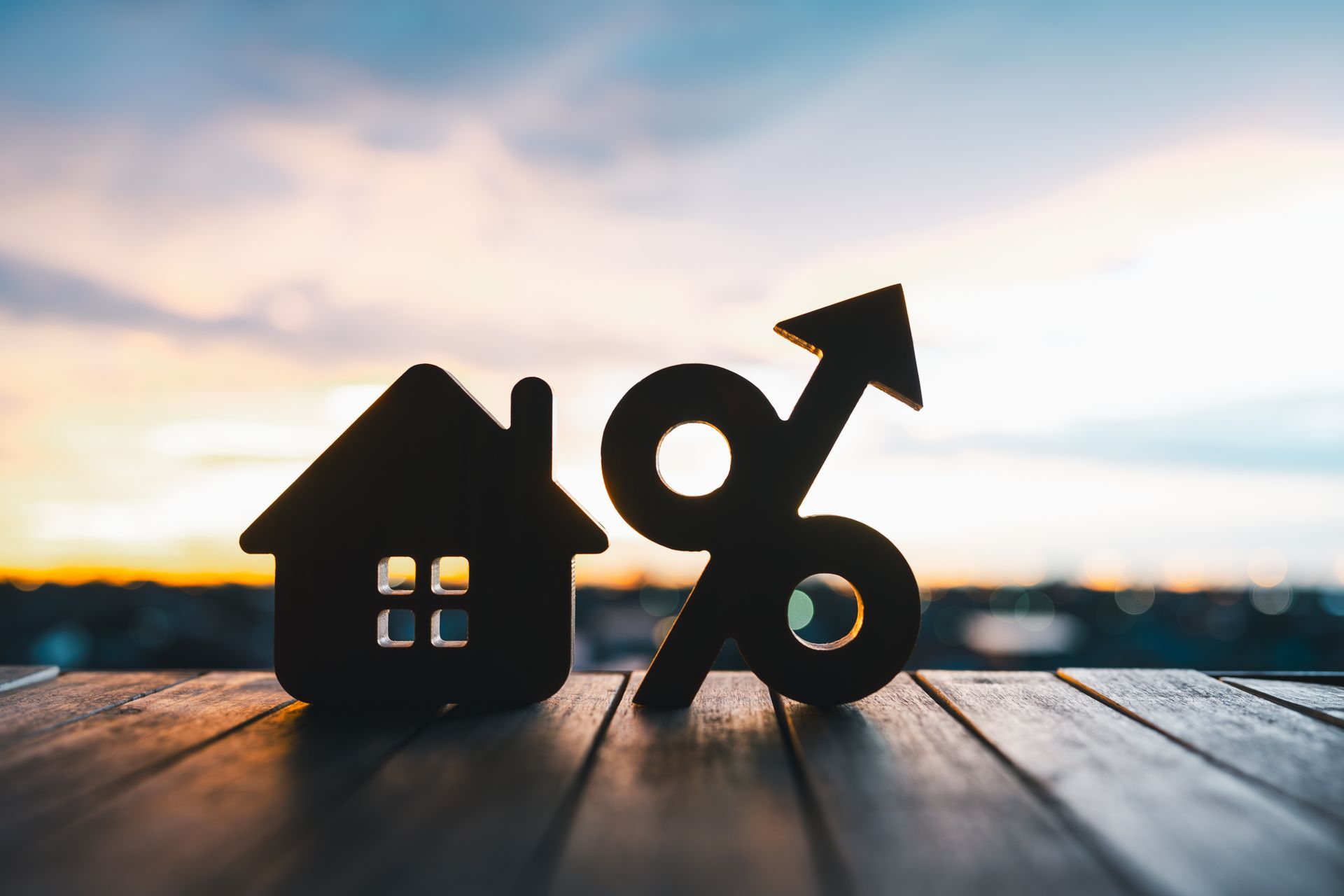Blog

Halloween is the perfect time to showcase your creativity and transform your outdoor space into a spine-chilling setting for a spooky soirée. Whether you're hosting a haunted house party, a ghostly gathering, or simply want to add some festive flair, your concrete patio can provide the perfect canvas for all your Halloween dreams. This blog will guide you through the process of turning your patio into an eerie yet stylish venue that will impress even the most discerning ghouls and goblins. Why Concrete Patios are Perfect for Spooky Soirees Concrete patios are incredibly versatile and durable, making them an ideal choice for any outdoor Halloween event. Unlike other materials, concrete offers long-lasting resilience against the elements, ensuring your spooky setup remains intact throughout the season. Its customization options allow you to mold and shape your patio to fit any theme, providing a strong foundation for unique and creative designs. The design flexibility of concrete is unmatched. You can easily incorporate various textures, colors, and finishes to create a distinct ambiance. From faux tombstones and eerie walkways to dramatic lighting effects, the possibilities are endless. This versatility is particularly advantageous when hosting seasonal events, enabling you to transform your space from chic and modern to hauntingly atmospheric with minimal effort. Additionally, concrete patios are low maintenance, freeing you from constant upkeep and allowing you to focus on the more exciting aspects of party planning. With a simple rinse or sweep, your patio is ready for guests, ensuring you spend more time enjoying the festivities rather than preparing for them. Design Ideas to Haunt Your Guests Creating an unforgettable atmosphere begins with the right design elements. Start by incorporating eerie lighting throughout your patio to cast haunting shadows and highlight key areas. String lights draped with spider webs, lanterns with flickering LED candles, and strategically placed spotlights can all contribute to an ominous glow. For décor, consider using creepy concrete structures like faux tombstones, gargoyles, or cauldrons. These elements can be painted or etched with intricate designs to add a touch of sophistication. Incorporate natural elements such as autumn leaves and branches to enhance the haunted forest feel and seamlessly blend your patio with the surrounding environment. To give your patio an extra touch of mystery, consider adding themed seating areas with vintage furniture draped in tattered fabrics. This creates an inviting yet eerie setting for your guests to enjoy. Don't forget to include subtle soundscapes such as howling winds or distant thunder to add an auditory element to the spooky atmosphere. DIY Projects to Transform Your Patio Bringing your Halloween vision to life doesn't have to break the bank. There are several DIY projects you can tackle to create custom concrete decorations and furniture. For instance, crafting your own concrete planters shaped like spooky skulls or jack-o'-lanterns can add an unexpected twist to your patio décor. Creating a concrete fire pit with a spooky twist is another fantastic project. You can mold the concrete into eerie shapes like bats or ghosts around the edges, providing both warmth and ambiance for your guests. Additionally, consider constructing a concrete bar or buffet table to serve themed drinks and snacks, complete with a faux stone finish for added effect. When working on these projects, ensure you have the necessary safety gear and tools. Proper preparation and curing of the concrete are key to achieving professional-looking results. By investing time in these DIY endeavors, you'll not only save money but also enjoy the satisfaction of creating something uniquely yours. Safety Tips for Halloween Patio Parties While creating a spooky atmosphere is important, ensuring the safety of your guests should be a top priority. Begin by checking for potential trip hazards on your patio, such as uneven surfaces or loose decorations. Mark any elevated areas with reflective tape or lights to prevent accidents in low-light conditions. Fire safety is crucial, especially if you're incorporating candles or a fire pit into your setup. Use battery-operated LED candles instead of open flames to reduce the risk of fire. If you're using a fire pit, keep a fire extinguisher nearby and establish a clear boundary to prevent guests from getting too close. Lastly, ensure your pathways and entry points are well-lit and clear of obstacles. This not only guides your guests safely through the space but also adds to the overall ambiance. By taking these precautions, you'll ensure your Halloween party is both fun and safe. Share Your Haunting Creations Conclusion A concrete patio offers the perfect foundation for creating a hauntingly beautiful Halloween setting. With its durability, customization options, and low maintenance, it's an excellent choice for hosting memorable events. By incorporating creative design elements, tackling DIY projects, and prioritizing safety, you'll craft an unforgettable experience for your guests. Ready to get started? Grab your cauldron, summon your creativity, and begin transforming your patio into the ultimate Halloween haven. For professional help, give us a call at (816) 651-0562!
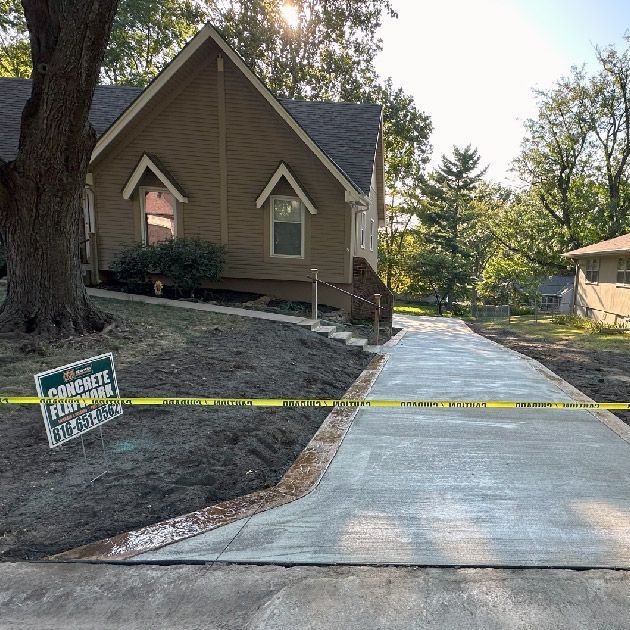
KCH Concrete Services is proud to showcase a recent project that transformed a Lee's Summit driveway into a beautiful and functional outdoor space. This 2,600 square foot driveway renovation and expansion included a striking stamped border and the strategic placement of buried downspouts. The Challenge The existing driveway was in a state of disrepair, with cracks, uneven surfaces, and fading color. The homeowner was seeking a complete overhaul that would not only improve the driveway's appearance but also enhance its durability and functionality.

Concrete—it's not just for sidewalks and driveways anymore. Whether you're a homeowner, contractor, or DIY enthusiast, the finish you choose for your concrete project can dramatically influence the look and feel of your space. Let's explore the various types of concrete finishes and help you decide which one is right for you. Why Concrete Finishes Matter The finish of your concrete surface does more than just impact aesthetics. It affects the durability, maintenance, and usability of the space. Here are some popular finishes and what you need to know about each. 1. Broom Finish What It Is: A broom finish is achieved by dragging a broom across the surface of freshly laid concrete. The texture created provides a non-slip surface, making it a favorite for driveways, sidewalks, and patios. Benefits: Slip-resistant Cost-effective Quick to apply Best For: Driveways, pool decks, and outdoor walkways. 2. Smooth Finish What It Is: A smooth finish, also known as a trowel finish, is achieved by using a hand trowel or power trowel to create a sleek, smooth surface. This type of finish is usually found in indoor spaces. Benefits: Easy to clean Versatile for painting or staining Professional appearance Best For: Basements, garages, and interior floors. 3. Exposed Aggregate Finish What It Is: An exposed aggregate finish is created by removing the top layer of cement paste to reveal the underlying aggregate. This finish is both decorative and functional, offering a unique, textured appearance. Benefits: Highly durable Slip-resistant Aesthetic appeal Best For: Outdoor patios, driveways, and walkways. 4. Stamped Concrete Finish What It Is: Stamped concrete mimics the look of other materials like stone, brick, or wood. This finish is achieved by pressing molds into the wet concrete to create patterns and textures. Benefits: Highly customizable Cost-effective alternative to natural materials Durable Best For: Patios, pool decks, and driveways. 5. Polished Concrete Finish What It Is: Polished concrete is created by grinding the concrete surface with progressively finer grinding tools. The result is a high-gloss finish that is both beautiful and durable. Benefits: Low maintenance Reflective, enhancing natural light Long-lasting Best For: Commercial spaces, modern homes, and showrooms. 6. Colored Concrete Finish What It Is: Colored concrete is achieved by adding pigments directly into the concrete mix or by staining the surface. The color options are vast, providing a unique look to your concrete project. Benefits: Customizable color options Long-lasting color Enhances aesthetic appeal Best For: Driveways, patios, and interior floors. 7. Salt Finish What It Is: A salt finish is created by pressing coarse rock salt crystals into the wet concrete. Once the concrete sets, the salt is washed away, leaving small pits in the surface that provide a distinctive texture. Benefits: Slip-resistant Attractive, textured appearance Cost-effective Best For: Pool decks, patios, and walkways. How to Choose the Right Finish Choosing the right concrete finish depends on several factors, including intended use, aesthetic preferences, and budget. Here are some questions to consider: Where will the concrete be installed? Outdoor areas might benefit more from textured finishes like broom or exposed aggregate for slip resistance. How much maintenance are you willing to do? Polished concrete is low maintenance, while stamped and colored finishes may require periodic sealing. What is your budget? Simple finishes like broom and smooth are generally more cost-effective, while more elaborate finishes like stamped or polished can be more expensive. Conclusion No matter your project, the right concrete finish can elevate the look and functionality of your space. If you're still unsure which finish is best for you, KCH Concrete Services is here to help. Our experts can provide personalized recommendations and professional installation to ensure your project is a success. Ready to transform your space with the perfect concrete finish? Contact KCH Concrete Services today and let's get started! (816) 651-0562 --- By following this guide, you can make an informed decision on the best concrete finish for your next project. Happy building!
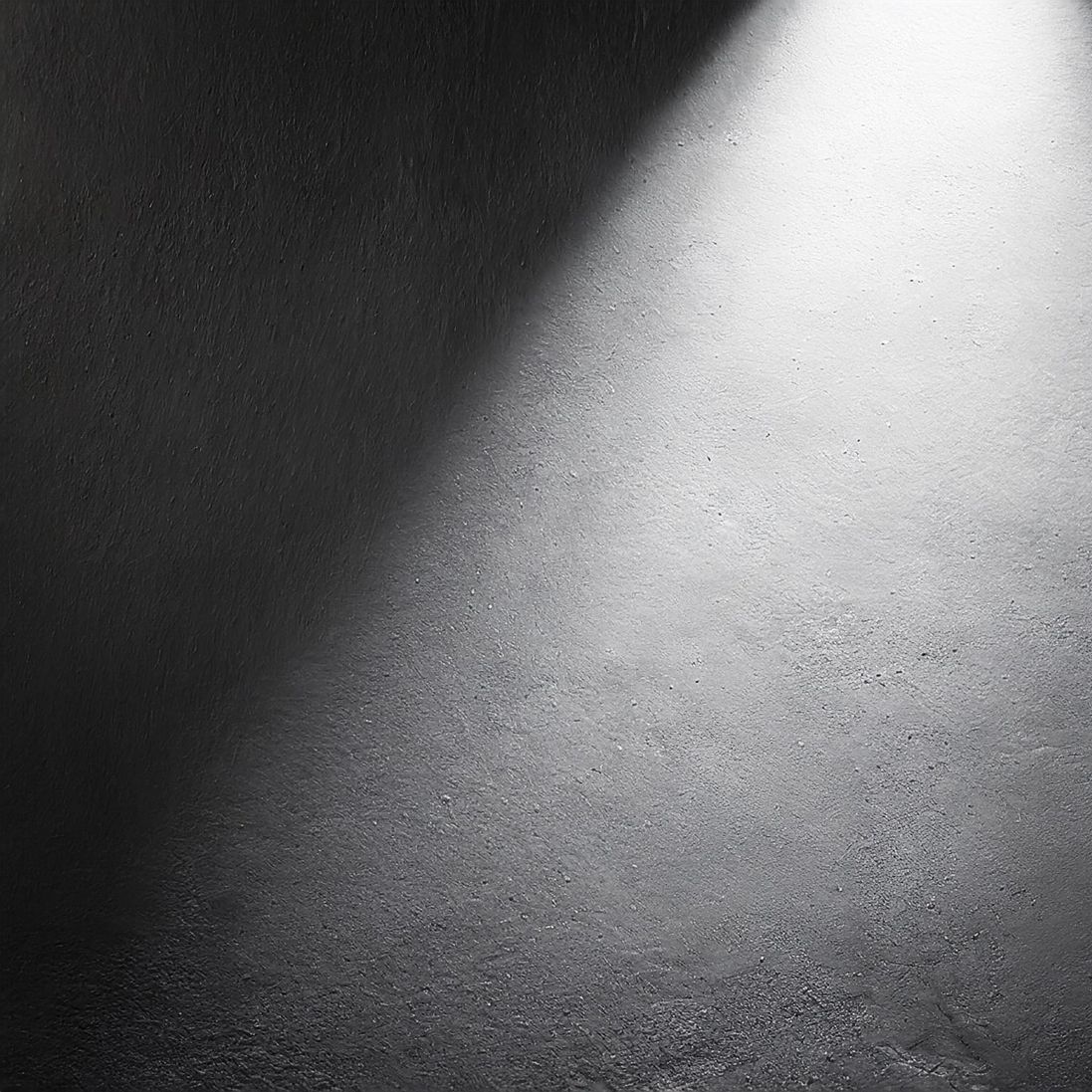
Dreaming of a backyard retreat perfect for entertaining or peaceful evenings under the stars? Look no further than KCH Concrete Services in Kansas City, MO. This project spotlight showcases our expertise in crafting a beautiful and functional concrete patio. Bringing the Vision to Life The homeowners in Kansas City desired a spacious patio to extend their living area outdoors. KCH Concrete Services worked closely with them to understand their needs and preferences. From the size and shape to the type of finish, the KCH team ensured the patio design perfectly complemented the existing architecture and the homeowner's vision. Quality Craftsmanship, Exceptional Results KCH Concrete Services' skilled professionals brought the design to life with meticulous attention to detail. The project highlights include: • Durable Concrete Construction: Built to withstand Kansas City's weather, the patio provides a long-lasting outdoor space for years to come. • Flawless Finish: KCH Concrete Services ensured a smooth, level surface for a comfortable and inviting space. A Backyard Oasis Awaits Thanks to KCH Concrete Services' expertise, the homeowners now enjoy a stunning concrete patio that elevates their backyard living experience. The project demonstrates KCH's commitment to providing exceptional customer service, high-quality materials, and flawless craftsmanship. Ready to Create Your Dream Patio? Contact KCH Concrete Services in Kansas City, MO, and let our team transform your backyard into a functional and beautiful oasis. Our team of experts will work with you to design and build a concrete patio that exceeds your expectations. Give us a call at (816) 651-0562! Also, check out the video below to see our team at work!
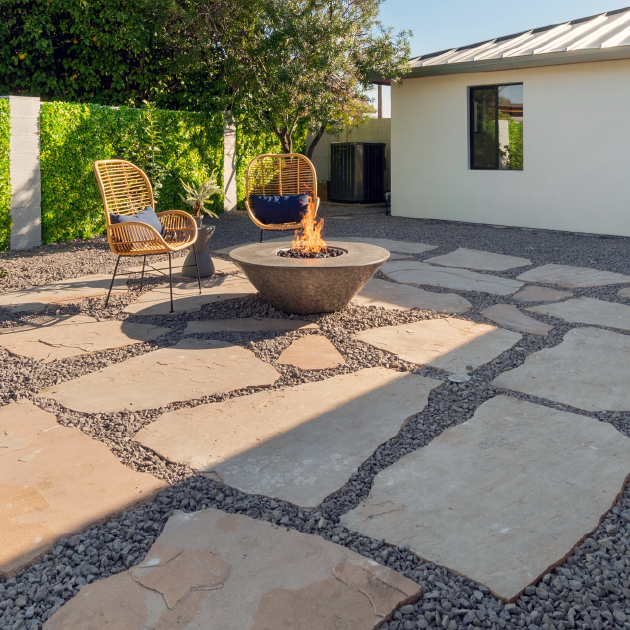
In the heart of Kansas City, where the charm of the Midwest meets a thriving urban culture, homeowners are looking to blend indoor comfort with outdoor living. This shift has brought patios into the spotlight, making them a coveted addition to any backyard. For those ready to transform their outdoor space, here are some trendy patio ideas that not only encourage relaxation and entertainment but also add value to your property. Stamped Concrete for Character Gone are the days of plain, utilitarian concrete patios. Stamped concrete, with its versatility in textures and colors, can mimic high-end materials like natural stone, brick, or wood at a fraction of the cost. Whether you're aiming for a rustic look reminiscent of wooden planks or a sophisticated stone finish, stamped concrete offers durability and ease of maintenance, making it an ideal choice for Kansas City's fluctuating weather. Sleek Fire Pit for Cozy Evenings Incorporate a sleek, modern fire pit into your patio design to extend your outdoor living through the cooler months. A fire pit not only serves as a stunning focal point but also invites family and friends to gather and enjoy the warmth. For a seamless look, consider using the same or complementary concrete material in your fire pit construction, tying the space together beautifully. Outdoor Kitchens and Bars for Entertaining Elevate your patio experience by integrating an outdoor kitchen or bar, turning your backyard into the ultimate entertainment hub. Concrete countertops are gaining popularity for their durability and customizability, able to withstand Kansas City's weather while offering a stylish surface for preparing meals and cocktails. Pergolas and Shade Structures for Comfort Amidst the sunny days, having a shaded retreat can make your patio much more enjoyable. Pergolas and other shade structures not only provide relief from the sun but also add architectural interest. Opt for a concrete foundation to anchor your structure, ensuring longevity and stability. Green Spaces and Planters for a Touch of Nature Softening your patio edges with green spaces or concrete planters brings life and color to your outdoor area. Consider incorporating native plants that thrive in Kansas City's climate, minimizing maintenance while supporting local ecology. Conclusion: A well-designed patio not only extends your living space but reflects your personal style and enhances your home's overall appeal. By incorporating these trendy ideas into your backyard with the help of a skilled concrete company in Kansas City, you can create an outdoor oasis that you'll enjoy for years to come.
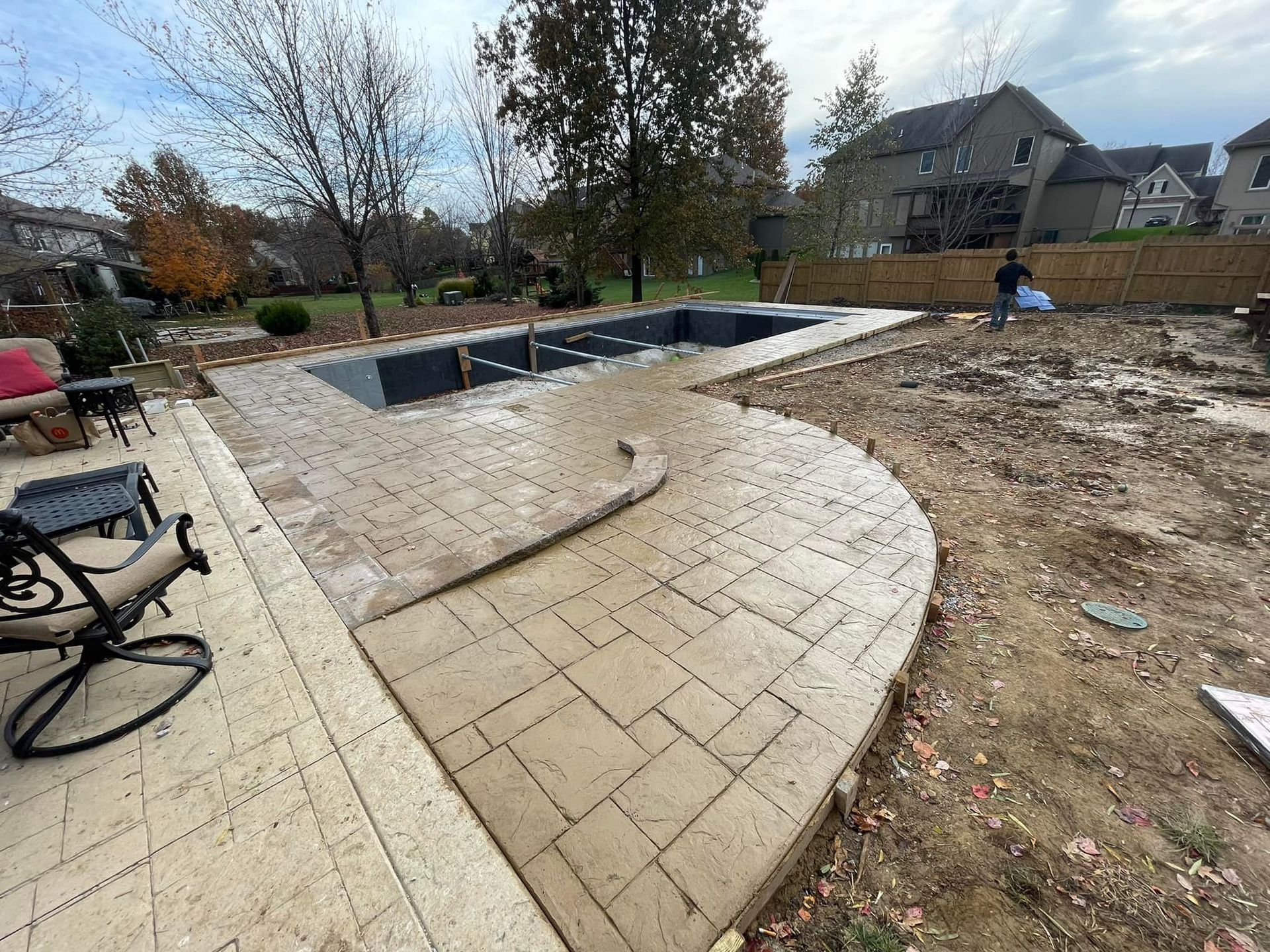
The sun is beginning to warm the earth, birdsong fills the air, and the world is waking from its winter slumber. For homeowners, this rejuvenation brings an ideal opportunity to tackle projects that can bolster the beauty, functionality, and value of their homes. The early days of spring present a golden season for concrete endeavors that promise a return on investment, offering a literal foundation for growth and improvement. This comprehensive guide is crafted for those looking to make the most of the season by taking on concrete projects that set the stage for a successful year of home stewardship. Enhancing Curb Appeal First impressions count, and the outside of your home is the first thing that guests, potential buyers, and even you see. Landscaping and exterior improvements not only enhance the beauty of your property but also reflect the pride and care you take in your home. In the context of concrete projects, a well-maintained driveway, pristine pathways, and an inviting patio can transform a home's exterior. Perhaps you're finally ready to stamp your style with a decorative concrete overlay, or maybe it's the year to tackle that long-overdue repair on your driveway. Spring is the perfect time to do so, with milder temperatures ideal for concrete work. Fresh concrete can cure effectively, and sealants can be applied for durable protection. Preventative Maintenance A stitch in time saves nine, and this saying holds undeniable truth when it comes to home maintenance. Early spring is a strategic time to inspect your exterior concrete for any damage caused by the winter, and to address it before it worsens. Cracks in concrete can start small but have the potential to become major issues as moisture and temperature fluctuations exacerbate them. By addressing these concerns promptly, homeowners can prevent water infiltration, which can lead to further damage, such as potholes and uneven surfaces. Hiring a reputable concrete professional to inspect your driveways, walkways, or patios can save you from escalating repair costs down the line. Cost Savings Timing is everything, particularly when it comes to budgeting for home improvements. Concrete projects carried out early in the year can often take advantage of more favorable pricing due to decreased demand before the busy summer months. Early spring also offers an opportunity to make use of budget-friendly materials and tools for your project. With the landscape season just getting started, suppliers might offer end-of-winter discounts on concrete and related products, making this the perfect time to stock up and save. Boosting Property Value Investing in your home is investing in your future. Renovations such as a new stamped concrete patio or a resealed and repaired driveway can substantively increase your home's value. Curb appeal is a significant factor for potential buyers, and a well-maintained exterior signals a property that's been taken care of. When considering a project's return on investment, keep in mind that prospective buyers often place high value on turnkey homes. Presenting them with a property that's already undergone quality improvements means you can command a higher price and sell more quickly. Seasonal Preparation Preparation is the key to a less chaotic and more successful year of home care. A solid, well-maintained concrete foundation can not only withstand the tests of time but also serve as the launching pad for all other spring and summer projects. Whether it's a sturdy base for a garden shed or a quaint area for outdoor dining, tackling concrete projects early can set the stage for the rest of the year's endeavors. Early spring is also the time for cleaning and organizing in and around the house. By starting with concrete projects, you’re not only ensuring the sustainability of these hard surfaces but also organizing your priorities in a way that benefits the entire property. Conclusion: The benefits of undertaking early spring concrete projects are manifold. They provide an aesthetic lift to your home, protect it from future damage, offer long-term cost savings, and can even increase your property's value. This is the time to harness the energy and optimism of the season and translate it into tangible improvements for your home. Whether you're a seasoned DIY enthusiast or prefer to enlist professional help, the key is to take action now and lay the groundwork for a year that shimmers with the promise of a well-maintained, beautiful abode. After all, a little concrete commitment today can pave the way for a brighter, more secure tomorrow. Don't forget that we are here to help! (816) 651-0562
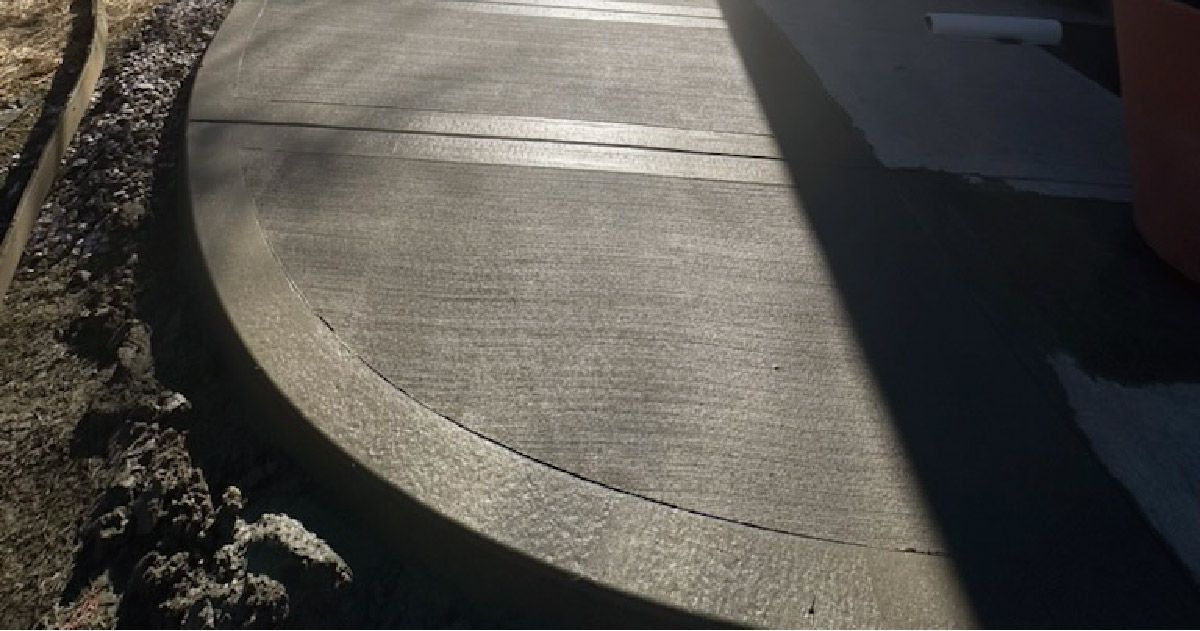
Bring the sunshine into your backyard with a beautiful new concrete patio! As the weather warms up in Kansas City, many homeowners are looking for ways to create an inviting outdoor living space. A concrete patio is a perfect way to do just that. It's durable, low-maintenance, and can be customized to fit your needs and style. In this project spotlight, we're featuring a stunning concrete patio that we recently completed in Parkville, Missouri. The homeowners wanted a space that would be perfect for entertaining friends and family, as well as relaxing and enjoying the outdoors. We worked with Trey's Lawn and Landscape to design a patio that was the perfect size and shape as well as compliment their home's exterior. The finished patio is a beautiful and functional space that the homeowners love. It's the perfect place to relax and enjoy the outdoors, whether they're having a barbecue with friends or simply enjoying a quiet evening under the stars. Here are some of the key features of this concrete patio: Large size : The patio is large enough to accommodate a seating area, a dining area, and a grill. Eventually an outdoor kitchen space will be added to the bump out in the patio. Customizable color and finish : The homeowners chose not to add color and a broom finish for their patio. Durable and low-maintenance : Concrete is a durable material that is easy to care for. Sealing is your best friend when maintaining a concrete patio, as it will extend its life and make stains wash off with ease. Versatile : Concrete patios can be used for a variety of purposes, such as entertaining, relaxing, and playing. If you're thinking about adding a concrete patio to your home, contact us today for a free consultation. We can help you design and build a patio that is perfect for your needs and style. Give us a call at 816-651-0562 and we can get you on the schedule! Project Photos:
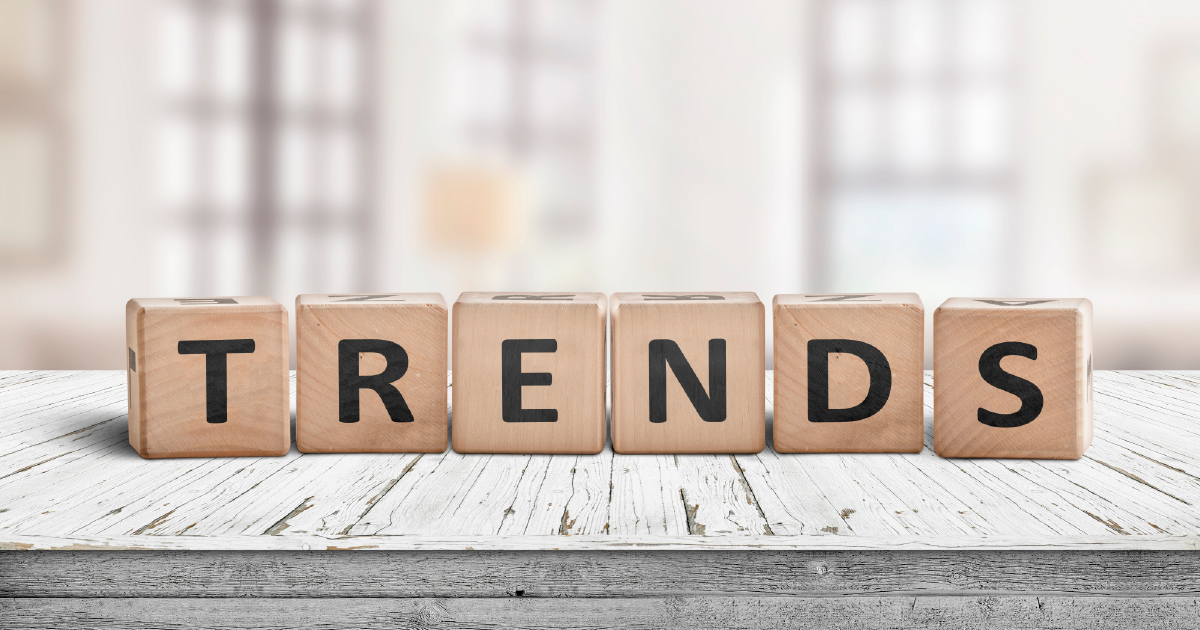
Welcome to 2024, homeowners! Whether you are planning a home renovation or just curious about what's in store for one of the most widely used building materials this year, this blog post is for you. In this ever-changing industry, it's important to stay updated on the latest concreting trends in order to make informed decisions for your home projects. So let's take a dive into some exciting developments that will shape the way we think about concrete in 2024 and beyond. Introduction to the growing popularity of concrete as a building material. Over the past few years, concrete has emerged as a popular choice in construction and building projects. This is not surprising given its many benefits such as durability, affordability, and low-maintenance needs. Unlike traditional materials like wood or brick, concrete is not prone to rot, shrinkage, or warping over time. It can withstand harsh weather conditions, and is less susceptible to fire and termites. Additionally, it is versatile and comes in a variety of finishes and colors. These aspects make it an attractive and practical choice for both builders and architects. As the demand for sustainable and long-lasting building materials continues to grow, it's no wonder that concrete is becoming an increasingly popular option. The versatility and durability of concrete in various construction projects. Concrete is one of the most widely used materials across the globe, and for good reason. Its versatility and durability make it invaluable in countless construction projects, from sprawling bridges to towering skyscrapers. It can be poured into virtually any shape, and with proper care and maintenance, can withstand the test of time. Perhaps one of the most impressive qualities of concrete is its ability to adapt to different environments and conditions, making it an ideal choice for both indoor and outdoor projects. Whether used for the foundation of a single-family home or the support structure of a massive stadium, concrete has proven time and time again its versatility and durability in various construction projects. Sustainable benefits of using concrete in building designs and its impact on reducing carbon footprint. Concrete is a highly efficient and versatile building material that has numerous sustainable benefits which make it a popular choice in the construction industry. In addition to its durability, concrete is also highly energy efficient, helping to reduce the carbon footprint associated with building construction. With its ability to retain and release heat effectively, concrete buildings require less energy for heating and cooling, thereby reducing energy consumption. Moreover, concrete is widely available, and its production process has become more sustainable over the years, further contributing to its eco-friendliness. By opting for concrete in building designs, we can pave the way for a more sustainable future while also enjoying the many benefits that it has to offer. Innovative uses of concrete in interior design, such as countertops and furniture pieces. Concrete is no longer restricted to just flooring and outdoor architecture. This versatile material has found its way into modern interior design, especially in the form of countertops and furniture pieces. From sleek and elegant to rugged and industrial, the design possibilities are virtually endless. Concrete countertops offer a unique alternative to traditional surfaces like granite and marble, providing durability, easy maintenance, and an endless range of colors and textures. Similarly, concrete furniture pieces, such as tables and chairs, can add an industrial and edgy look to any interior design scheme. Concrete has proven to be a material that allows for imaginative creativity, opening up a whole world of innovative possibilities in interior design. Incorporating decorative elements like stamps, stains, and textures to give concrete a unique look. Concrete is a versatile material that has been used for construction purposes for centuries. While it is known for its durability and strength, it can also be aesthetically pleasing when properly decorated. By incorporating decorative elements like stamps, stains, and textures, concrete can have a unique look that elevates the overall design of a space. Stamps can create intricate designs and even mimic other materials like brick or cobblestone, while stains can add color and depth to the surface. Texture can create an interesting and tactile experience, whether it be a smooth and polished finish or a rugged and rough surface. Incorporating decorative elements to concrete not only enhances its appearance, but it can also increase its value and appeal. Utilizing precast concrete for faster construction timelines and cost-effectiveness. In the world of construction, time is money. Every day spent on a project means additional costs in wages, equipment rentals, and other expenses. Utilizing precast concrete is one way to address these challenges, offering faster construction timelines and increased cost-effectiveness. Precast concrete elements are manufactured offsite in a controlled environment, meaning that they can be produced in large quantities and made to exact specifications. Once onsite, these precast elements can be quickly erected, reducing the time and labor required for traditional construction methods. In addition, using precast concrete can also result in cost savings, as large-scale production reduces material waste and can lead to bulk discounts on supplies. Ultimately, the use of precast concrete is an effective way for construction companies to stay on time and on budget, while still delivering high-quality results. Trends in eco-friendly concrete mixes and their impact on the environment. As environmental awareness continues to rise, the construction industry has begun to shift towards more sustainable and eco-friendly practices. One of these areas of innovation is in the development of eco-friendly concrete mixes. These mixes utilize materials that have little impact on the environment, such as recycled glass, slag, and fly ash. Additionally, they can reduce carbon emissions during production by using less traditional cement and implementing more efficient manufacturing processes. By adopting these sustainable alternatives, we can significantly decrease the carbon footprint of the construction industry while still delivering high-quality and durable structures. As eco-friendly concrete mixes continue to gain popularity, we can look forward to a greener future for construction projects of all sizes. The rise of 3D printing technology in creating custom-designed concrete structures. 3D printing technology has been gradually making its way into many industries, and construction is no exception. In particular, custom-designed concrete structures are benefitting from the advancements in 3D printing technology. No longer limited to traditional construction methods, 3D printing allows for higher precision and level of detail in creating concrete structures. The process involves feeding a computer program design into a 3D printer, which prints the structure layer by layer. This method not only speeds up construction time but also reduces waste materials and labor costs. With the growing demand for eco-friendly and sustainable building practices, 3D printing is becoming an exciting alternative for creating innovative and customized concrete structures. Conclusion on why investing in concrete for future construction plans is a wise decision. When it comes to building structures that must withstand the test of time, concrete remains the go-to material for many builders and engineers. One of the main reasons why investing in concrete for future construction plans is a wise decision is its durability. Unlike other materials, concrete can withstand the elements and natural disasters, making it a popular choice for structures such as bridges, dams, and high-rise buildings. Furthermore, concrete technology continues to advance, resulting in new techniques and materials that make it even stronger and more resilient. Additionally, concrete is a sustainable material, making it an eco-friendly choice for construction. Investing in concrete not only ensures a reliable and secure structure but also contributes to a more sustainable future. Overall, the benefits of concrete in construction make it an excellent investment option for future projects.
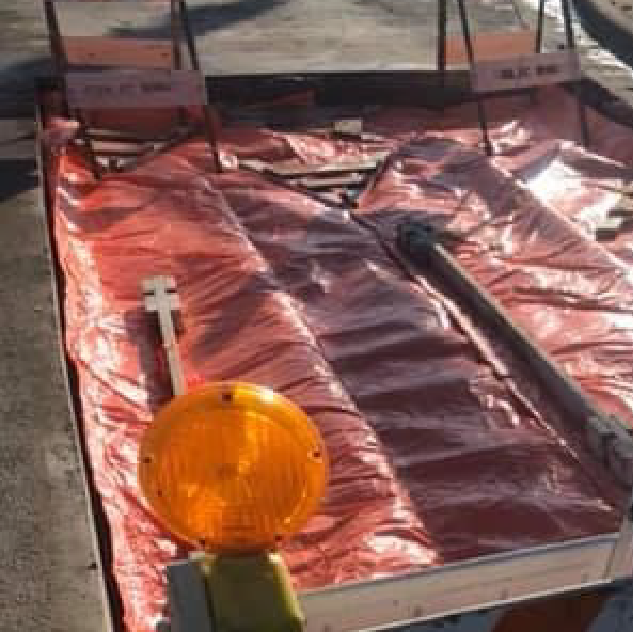
With winter in full swing, temperatures across the globe are dropping and it's time to be mindful of unique conditions that may effect our outdoor projects. As concrete contractors and homeowners tackling outdoor projects, you'll want to pay extra attention to colder weather concreting processes so your work is up-to-code and safe! The American Concrete Institute (ACI) Committee 306 has recently issued a report discussing cold weather concreting best practices and this guide is intended as an easy reference for those trying to increase their knowledge on the subject. Read along as we unpack all the tips outlined by ACI Committee 306 including what structures need special consideration during cold weather concreting, appropriate steps to protect your project from temperature related damage, tools designed specifically for winter work, and safety measures tailored to frigid settings. Let's start learning about cold weather concreting together!

